![]()
![]()
![]()
Use LEFT and RIGHT arrow keys to navigate between flashcards;
Use UP and DOWN arrow keys to flip the card;
H to show hint;
A reads text to speech;
40 Cards in this Set
- Front
- Back
|
Antimicrobial Chemotherapy |
administer a drug to an infected person that destroys the infective agent without harming the host's cells. |
|
|
Antibiotics |
substances produced by the natural metabolic processes of some microorganisms that can inhibit or destroy other microorganisms **come primarily from aerobic spore-forming bacteria and fungi** |
|
|
Paul Ehrlich |
early concepts of chemotherapy |
|
|
Prophylaxis |
Drugs administered to prevent an infection from happening |
|
|
Combined Therapy (combination therapy) |
more than 2 drugs at a time to treat an infection |
|
|
Synergy (synergistic effect) |
drugs used together to enhance each other's actions for best therapeutic affect |
|
|
microbes for antibiotics and chemotherapy terminiology |
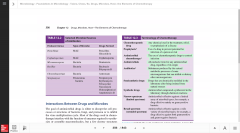
|
|
|
narrow- spectrum |
drugs effective on small range of cell types |
|
|
medium-spectrum |
effective on gram + and gram - bacteria but not all types |
|
|
broad-spectrum |
large varieties of bacteria - most gram + and gram - as well as richettsias, mycoplasms and spirochetes |
|
|
drugs and effects on microbial groups |
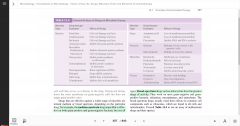
|
|
|
Spectrums (pg. 357) |

|
|
|
antimicrobials and cell wall effects |
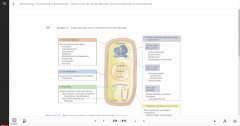
|
|
|
Penicillin & bacterial cell walls (pg. 359) |
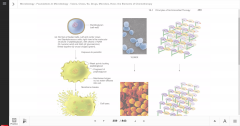
|
|
|
Prokaryotic ribosome inhibition (pg. 340). |
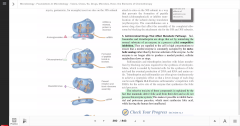
|
|
|
competitive inhibiton |
mimic normal substrate of enzyme sulfonimides/ trimethoprim |
|
|
sulfonimides/trimethoprim |
mammals do not produce folic acid - obtain it as a derivetive of food allows inhibition of bacterial cells and protozoan parasites (synthesize folic acid) |
|
|
sulfonimide action |
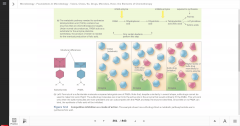
|
|
|
beta lactam |
interferes with proteins involved in cell wall leading to lysis of cells |
|
|
penicillin |
treat large groups of bacterial infections both synthetic and naturally derived |
|
|
cephalosporin |
versatile, broad spectrum - less allergic effect than penicillins parenteral med |
|
|
parenteral medications |
injection route of medications (in muscles or veins) |
|
|
structure of cephalosporins |
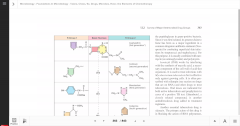
|
|
|
polymixins |
narrow-spectrum peptide antibiotic B & E - used routinely |
|
|
fluoroquinolones |
synthetic related to quinines broad-spectrum highly potent absorbed by intestines |
|
|
aminoglycosides |
broad-spectrum inhibit protein sysnthesis |
|
|
tetracyclines |
bind to ribosomes, block protein synthesis broad spectrum |
|
|
antibiotic structures |
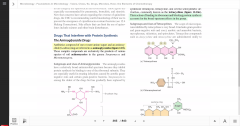
|
|
|
azoles |
broad-spectrum antifungals inhibit ergosterol & cell membrane synthesis |
|
|
antiviral drug cycles |
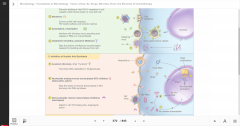
|
|
|
anti-HIV drugs |
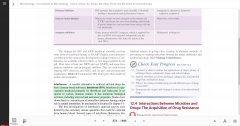
|
|
|
Interferons |
glycoprotein primarily by fibroblasts |
|
|
Drug resistance |
toleration of drug that |
|
|
transfer of drug resistance (pg. 373) |
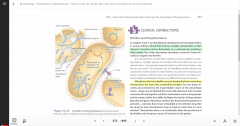
|
|
|
Aquired drug resistance ( Pg. 374) |

|
|
|
Natural selection of drug resistance (pg. 375) |

|
|
|
Helpful strategies to limit drug resistance |
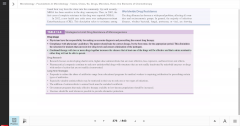
|
|
|
toxicity allergy disruption of normal flora |
damage to a major organ from the effect of a drug drug acts as antigen causing hypersensitivity destruction of normal microbes in normal body chemistry |
|
|
superinfection |
when resistant microbes take over the body! |
|
|
major adverse toxic reactions |
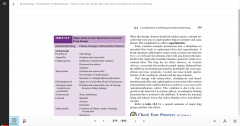
|

